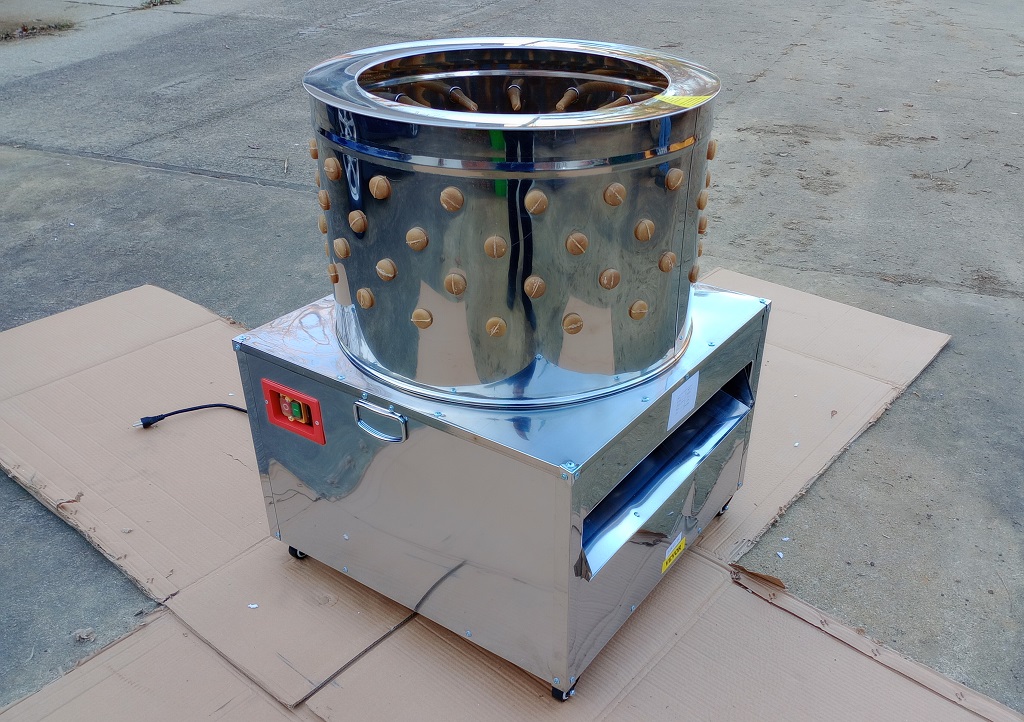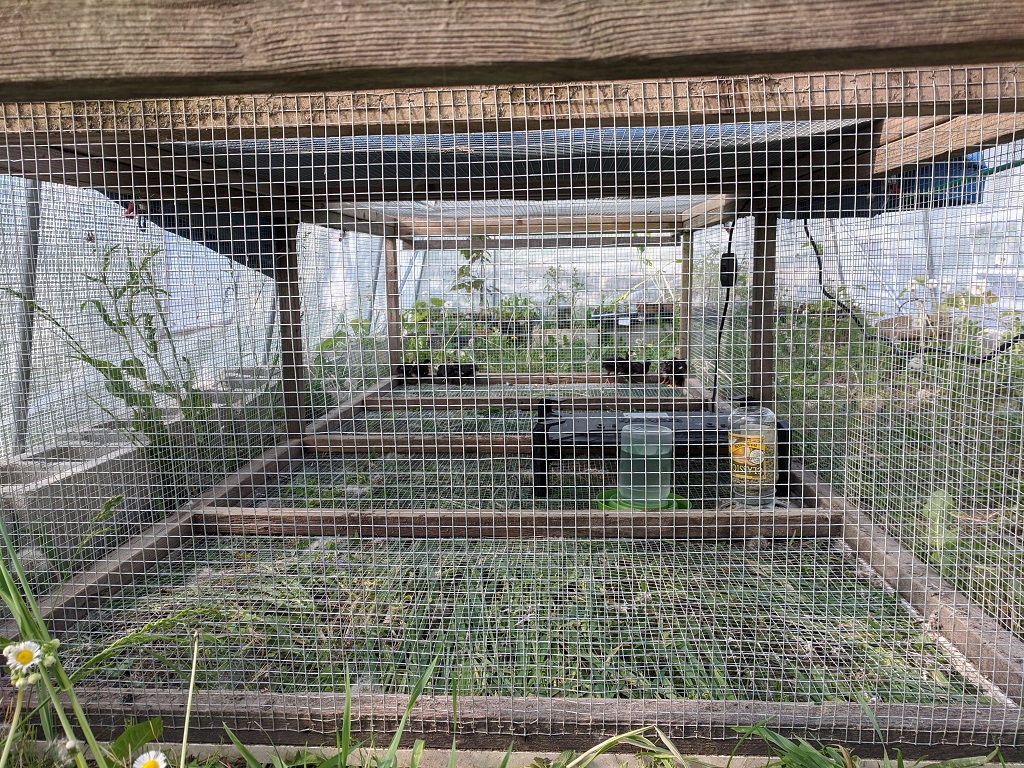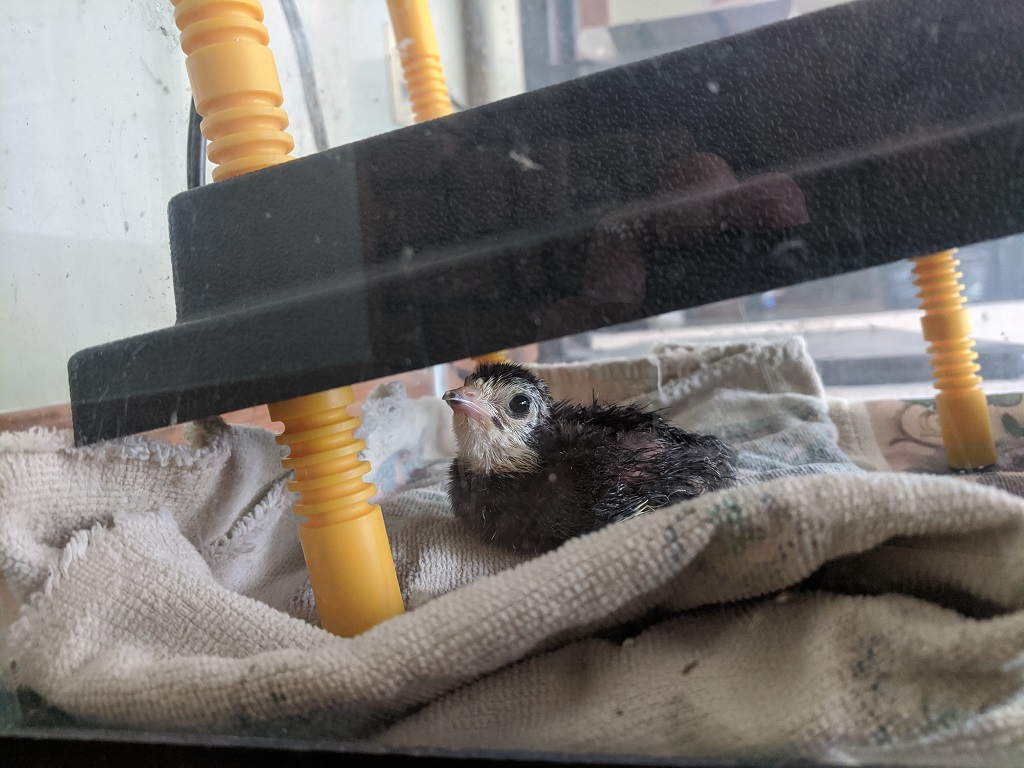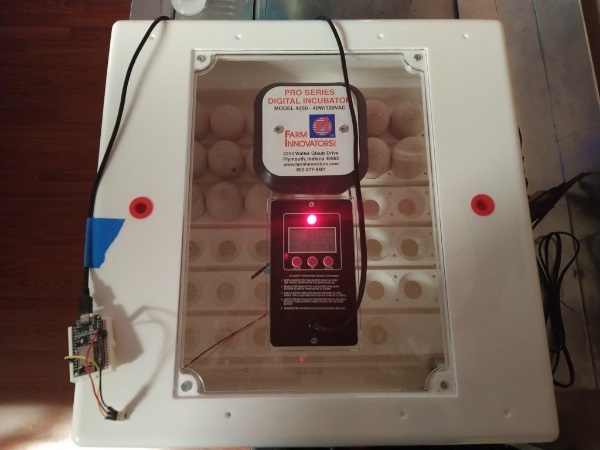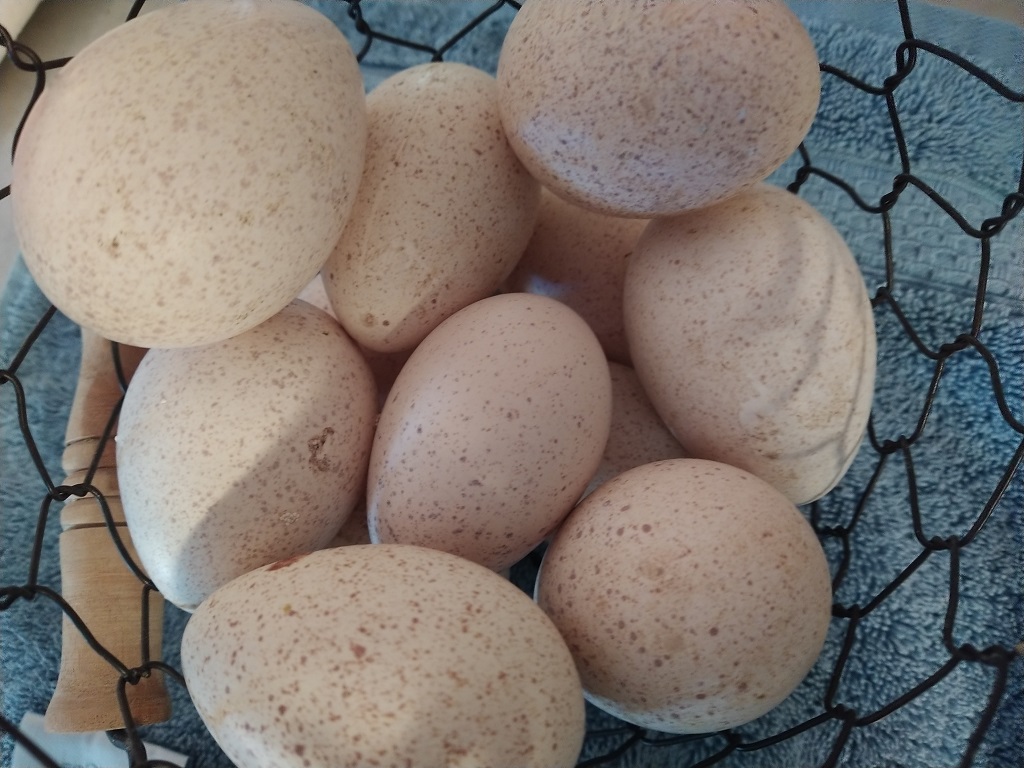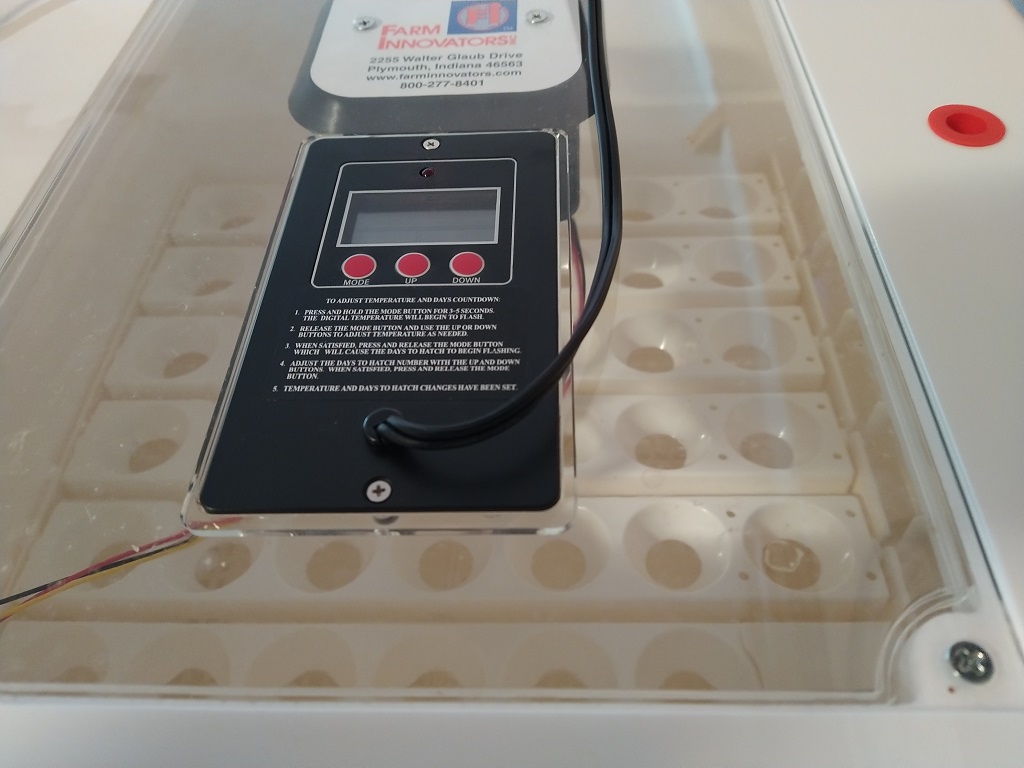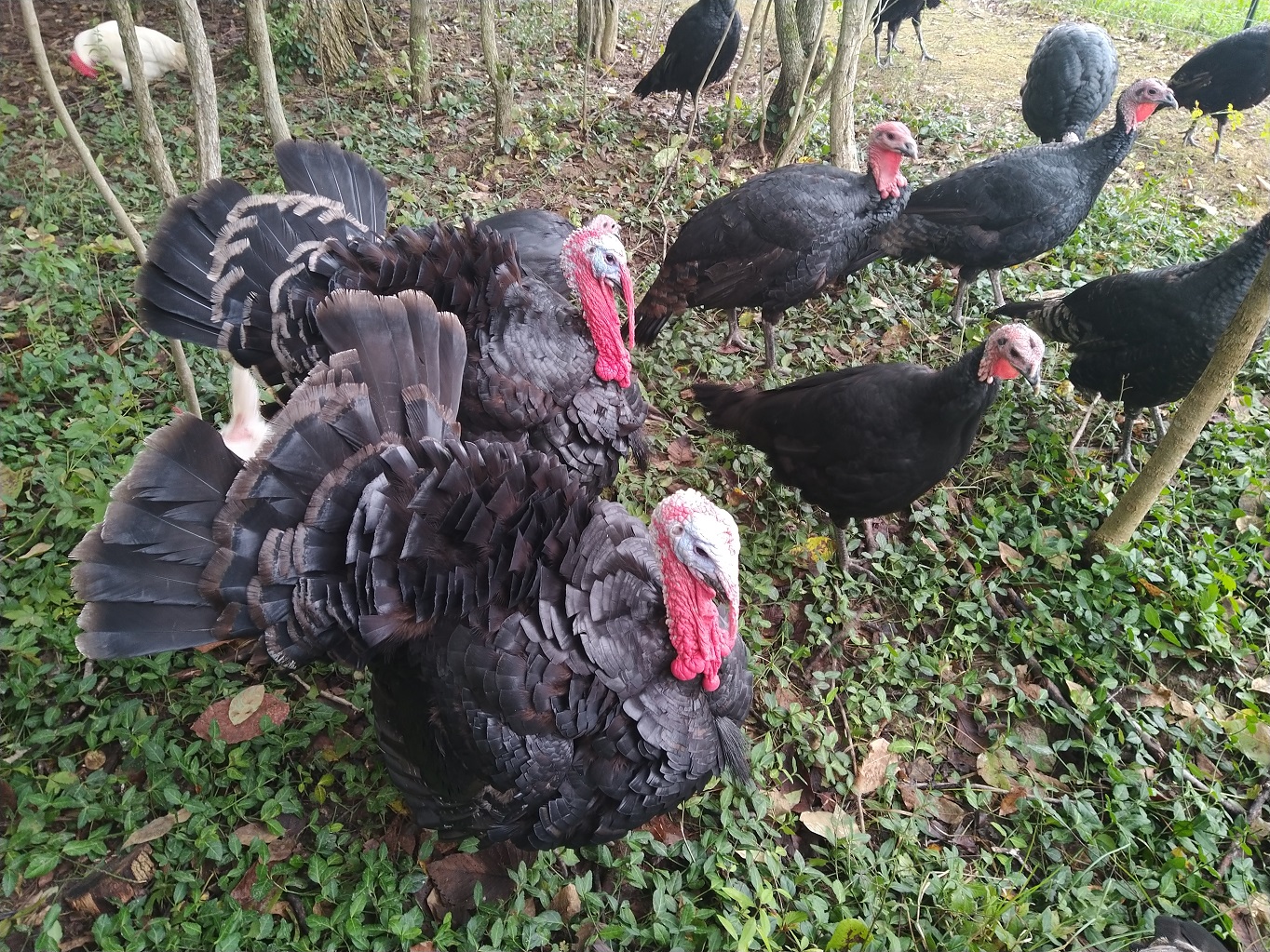We butchered ten turkeys before Thanksgiving — all hens. The ironic thing is that I am pretty sure we had some cornish cross that ended up bigger than these. We’ve got 56.956 pounds of turkey in the fridge (plus a couple pounds of trimmings for cat treats throughout the year). The plucker worked incredibly — we were able to completely butcher a bird in about 15 minutes.
Tag: turkeys
Chicken Plucker
We got a chicken plucker for processing birds this year — the metal on the base is really thin, the motor appears to have come pre-rusted, and they somehow consistently put one of the rubber sticks in upside down (although, after using it, we think this might be intentional and kind of “sweep” the feathers from underneath out the shoot).
We have been very hesitant to buy one of these — they are expensive. But it takes us so much time to butcher birds. I see videos on YouTube of people plucking a bird in five minutes. That’s not us. At first, I thought maybe it was a “get better with practice” sort of thing. Or that we weren’t scalding enough. Or that we were doing something else wrong. But it’s been years. We’re not getting much quicker, the scald is fine, and the only thing we might be doing wrong is being too picky about what constitutes “plucked”.
The biggest hurdle was that we couldn’t really see one work to determine if we’d be done defeathering in a minute or if we’d still be spending half an hour plucking feathers. There wasn’t a good way to find out, though. People post videos online, but they also post videos of themselves plucking a bird in a few minutes. So that’s not really trustworthy. We finally decided to just spend money and buy a plucker. They work! There may be a few big wing feathers to pull. There may be a few smaller feathers near the feet. But the bird was plucked within a few minutes. It takes me about fifteen minutes to butcher a bird, and Scott was able to get a bird to the “ready to be butchered” point in fifteen minutes (that includes walking across the yard twice). This is such a huge difference — we were able to process all of our turkeys in a single day. It wouldn’t be a short day, there’s a good hour or two to clean everything up once we’re done. But it’s done in a day. And the birds were plucked very well.
Turkey Hatchlings v/s Turkeys in the Mail
The first time we bought baby poultry, we picked them up from a local(ish) hatchery. The chicks hatched overnight, were sorted in the morning, and we picked them up in the afternoon. Happy, healthy chicks. The second time, the hatchery was halfway across the country but offered overnight shipping. That’s not a cheap option, but the birds were still happy and healthy when they arrived. Then we wanted to raise turkeys.
We ordered from a well known hatchery, and the only option was “shipping”. They shipped once a week. And USPS shipping was amazingly slow. So very slow. The USPS employee at the local central depot rang us on Saturday morning to see if we could come pick the birds up because he didn’t think they would survive until they were delivered on what would probably be Tuesday. We did, but only one of the birds survived even though we spent the weekend nursing sick birds.
Last year, we tried again — ordered from another well known hatchery. I couldn’t find a hatchery that offered overnight or two-day shipping. But I was able to find one willing to let me pay a little extra to have additional food added to the shipping box. The chicks arrived, but they were still not super spry.
This year, we hatched our first turkey poults. It’s amazing how much easier it is to get them eating and drinking when you start at day zero! The little guys spent about 12 hours in the incubator drying off, then they spent another 12+ hours sleeping under the heater. Then they were hopping around, investigating everything, and being birds. After sprinkling moistened food on the floor and adding tiny bits of plants (clover and dandelion greens) to the top of the water, the little guys were eating and drinking. And, when would find food or water … all of the other poults rush over to investigate.
Greenhouse Turkeys
We have a greenhouse full of turkeys! It was turkey liberation day at the farm — all of the poults that hatched last week are now in a larger brooder in the greenhouse. They’ve got a larger “turkey toaster” (a plate heater) for the evenings, but they are running around, exploring, and happily eating green leafy things.
First Turkey Poult
2023 Turkey Hatching – The Eggs Have Landed
2023 Hatch – Turkey Hatching
We’re setting up the incubator tonight to get our first dozen turkey eggs going.
I need to leave the incubator sit overnight to get the temperature and humidity regulated. Tomorrow, we’ll be putting the eggs into the incubator.
Notes:
General:
Pointy end down, may need to leave empty space between eggs so they fit
Temperature
Forced-air incubator, so set to 99.5 degrees F (monitoring for temps between 99 and 100 F)
Humidity
First 25 days, relative humidity 50-60%
Final three days, increase humidity to 65-70%
Turkeys in the rain
It’s the time of year where people on TV keep saying that turkeys are soooo stupid that you cannot leave them out in the rain because they’ll look up and drown. I cannot speak for the broad-breasted white franken-turkeys from massive turkey farms, but you know what you get if you put a black Spanish turkey out in the rain? A wet turkey!
In warm weather, they seem to like the rain. Our turkeys rarely run for shelter when it is raining.
Heritage Turkeys
In addition to growing open pollinated, heirloom vegetables — we’ve got a flock of heritage turkeys. These guys are Black Spanish turkeys. Unlike the broad-breasted turkeys raised commercially today, they walk around and do turkey things all day. They are all waiting by the gate as we walk over to the poultry pasture, and there are always a few turkeys following us around if we’re working in their area.
The two males we have from last year were amazing with the little poults this Spring. They’d take a share of poults and snuggle them at night to keep them warm. They’d march around them as the little ones pecked around during the day. Even now that the younger turkeys are almost fully grown, the older turkeys stand guard and make sure everyone gets access to food and water. Watching the adult turkeys with the younger ones has been right educational, and I am eager to hatch some of our own poults next year!
Duck and Turkey Milestones
We no longer have 22 tiny birds in the house! Stream (the new duckling) spent Monday night outside in the duck coop. We’ve been letting the little one out into the duck yard to hang out and get used to each other, but bringing it into the house at night. I got up at 6-something on Tuesday morning to make sure the little guy was OK and the ducks are now hanging out together in the yard. It was cold — mid 50’s — when I let them out of the coop this morning, and they all were napping next to the pond in the sunshine. The little one was sleeping right next to one of the big ducks.
Then, in the evening, we put the turkeys into the pasture with the big turkeys and chickens. They’ve been hanging out in the baby tractor next to the pasture, so everyone has had a chance to get used to each other. The little turkeys can fly really well — on Monday, Anya got sidetracked bringing the turkeys into the house. She left two thirds of the turkeys in the baby tractor with the zipper open! I noticed the chickens and turkeys were not in the coop, and I walked over to let them in. All of a sudden, this dark shadow comes flying at me … literally, it was a baby turkey who flew some twenty feet and cleared my shoulder. Since they were able to fly themselves out of the pasture, we trimmed feathers on their left wings. Now they look a little asymmetrical, but they mostly stay inside the pasture. Unfortunately, the mesh isn’t small enough and they can pop themselves out of the fencing.
The turkey farm where we picked up four turkeys last year — the owner said the male turkeys take turns sitting on the nest and taking care of the baby guys. I totally believe that after seeing how the big turkeys are with the little ones. They puff up and circle around the gaggle of baby turkeys. When the babies split out into multiple groups, the two big turkeys kind of round them up into two groups and each watch over his group. Anya says they even tuck the little ones around them to sleep.
